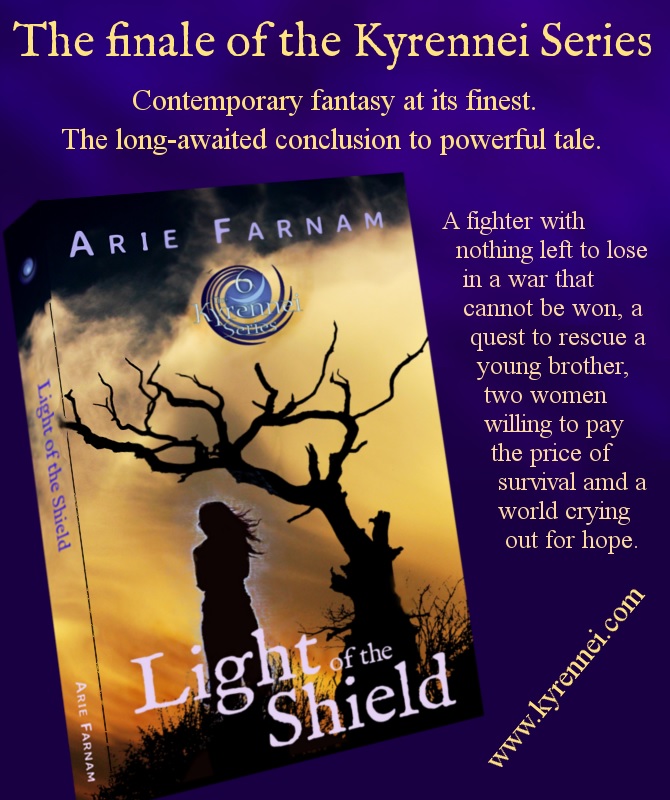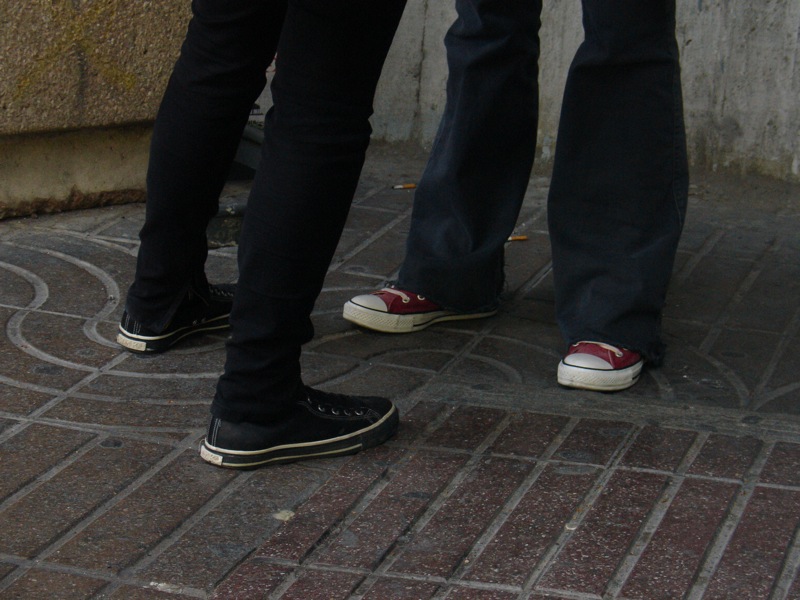To take no shit or to tough it out - a rebel's view
/I’m going to write about an incident here that I have never openly acknowledged before. I didn’t promise to never discuss it. There was no non-disclosure agreement, but I’m sure my high school principal assumed there was a gentlemen's hush-hush agreement.
He should have known. I’m no gentleman. Part of the point was that I’m not a man at all and was not a boy.
Creative Commons image by Craig Cloutier
I graduated from high school in a desert town so small that they changed the population sign when my family moved in from 150 to 154. My father was a rookie teacher and had to take whatever post came his way. The sophomore class I entered had six students. I got a study-abroad scholarship and spent my junior year in Germany, but I spent two years with them.
By the time I was ready to graduate I was also more than ready to get out of that tiny desert town. I had again lined up scholarships, this time to an exclusive, liberal arts school half a continent away. I had big dreams of international journalism—and more importantly—escape.
My grades and SAT scores were enough to land the scholarships. The other kids mentioned something about me being valedictorian and I was surprised we would have one with so few of us. Even so, I wasn’t without competition.
My study-buddy Faye, who was one of the best friends I had during my entire school career, was college-bound and savvier than me about most things outside of books as well. She would no doubt have had straight As, if her home life had been more like mine—i.e. stable, two-parents, and you know, a house with separate rooms for each kid rather than a tiny trailer.
But as it was, she wasn’t even in second place. I won’t pick on the kid who was by name because I doubt any of this was his fault, though his parents might have been involved.
In the early spring of my senior year, I was called into the principal’s office and told that I wasn’t going to graduate. I already had a college settled and full scholarships. The news hit me so hard it literally knocked the breath out of me. The principal said that, although the school had initially agreed that my credits from Germany would be accepted without any grades being counted against my GPA, he had determined that that wouldn’t be possible.
He gave me two choices. I could either repeat my junior year to make up the credits or take the grades given on my German report card into my GPA and accept that “pass” grades, of which there were several would be counted as Cs.
I had even gotten a real C on that report card—in third-year chemistry. I had never taken first- or second-year chemistry and it was in German. The teacher was a sour-faced traditionalist who probably was being “charitable” by her standards in giving me that C. I couldn’t follow the class at all and there were no accommodations for the fact that being legally blind I couldn’t see the chalkboards or read the tiny-print, light-blue-ink books.
If I accepted those grades I wouldn’t be going to college at all, given that my scholarships would evaporate. There was no way I could work my way through school without being able to drive or do the hurried physical labor of most minimum-wage jobs at fast-food restaurants. The principal maintained a level, uninterested tone as he delivered this soul-destroying ultimatum.
I went home in tears and was confused by my parents’ strange lack of concern.
Most of what they said was a blur to me, but I remember my mother at one point stating, “You need to stop grabbing everything for yourself.” Finally, I got what she meant. My mother was always fanaticly against selfishness and at one point she hinted that it was understandable and even justifiable for the town to want the son of a prominent local rancher to be valedictorian, rather than an interloper who had only been there for two years.
But it was my father who explained it to me plainly. I would not be allowed to graduate as valedictorian. It wasn’t actually impossible for me to graduate with a good GPA, but no one could say out loud that the issue was who would be valedictorian in our class of six. However, my father also didn’t seem to think that taking another year of high school would be such a bad thing, even if I had already taken every class the school offered and more than half of my senior year had been independent study and distance learning classes.
I was an emotional and loud-mouthed teen and I cried bitterly over it. I wanted more than anything to lash out, to go into the school yelling and demand justice. I wanted to talk to the other girls and tell all. This was what my parents made me understand I must not do. If I made any kind of fuss, I really would not graduate or would graduate with a GPA that would erase my scholarships.
It was my first major lesson in bowing my. head to injustice and keeping silent, and I think my parents thought it was a good and needful lesson in general, because I had given them a lot of mouth over the years and had a reputation for yelling, “It’s not fair!” at the slightest provocation.
They didn’t tell me exactly what to do or say, but I was actually a quick learner. Figuring out what to do wasn’t the hard part. It was swallowing the bile in my throat that was tough. I didn’t need the accolade of being valedictorian. That wasn’t really the issue.
I was a teenager and so at least somewhat selfish, but I think if someone had come to me and said, “Hey, you have your college thing worked out. Can we let one of the other kids have this valedictorian thing so that they have a fighting chance?” I would have given it up willingly. I just hated being scared out of my wits during that terrible moment in the principal’s office and bucked at being forced by authority to bow to something blatantly unjust.
Still I managed it. I walked back into the principal’s office a few days later, folded my hands in my lap and tried to put on a show of being a sweet and submissive young girl.
“I see that some misunderstanding has come up here, and I think we can solve it easily,” I said. “When I went to Germany, I agreed with the school that my grades would be counted as pass/fail, and clearly pass/fail grades can’t be counted toward someone being valedictorian. Having those pass/fail credits obviously makes me ineligible to be valedictorian, even if they don’t change my GPA.”
The principal was silent for a moment and then nodded and made a gruff sound of assent. It was settled and not a word was ever spoken about the matter again. I graduated with a 4.0 GPA and went off to college. I don’t know what happened to the kid who was valedictorian, but Faye, who wasn’t, became a lawyer for labor unions and did just fine.
A few more times in my life, I have had to formally bow to injustice. Once I was told explicitly by a hiring editor at a newspaper that I wouldn’t be hired because of my disability. I could have spent the best years of my journalism career finding a lawyer willing to gamble and suing the guy, and I might have won. But instead, I swallowed the bitter pill and went my own way.
Another time an editor insisted on switching the sequence of events in a news article I had written. I wrote that the NATO-led bombing of Kosovo in 1999 preceded the flood of Albanian refugees leaving the province, and showed that the newspaper’s own archives backed me up. But my editor stated that it was “policy” to say that the NATO-led bombing came only “in response to” the flood of Albanian refugees, “forced to flee” the province.
It was the clearest instance of political censorship I encountered as a journalist and I felt a bit like Winston in the book 1984, when he held incontrovertible evidence of vast lies in his hand for a brief moment. But I was a rookie reporter, scarcely more than a kid, and I was beyond grateful to have the relationship I had with that editor.
The bit of backbone I showed that time was to request that no false statement should appear under my name. I asked the editor to either remove my name from the article or allow me to rephrase that part vaguely enough to skirt the issue. We agreed on the latter solution.
Why am I digging all these skeletons out of my closet at this point? Mostly because I had pretty much forgotten about those incidents and when reminded of them, I realized that no one involved in any of those incidents has any power over me any more. I can say these things and any sanctions that might be brought against me can no longer harm me.
The same can’t be said for the situation I found myself in last fall with the climate action movement Extinction Rebellion. There, I was asked to keep silent about abuses of power and to accept being the only person explicitly excluded from leadership positions because our leader took a dislike to my questions and inability to swallow hypocrisy.
The stakes for me were emotional and social this time instead of the future of my education or my job. That’s a blessing of sorts. While the climate crisis threatens all of our survival, this exclusion and discrimination didn’t threaten my personal survival. It only threatened to cut me off from friends and a source of hope that the movement had become to me and many others.
Finally, the stress of being constantly blocked and excluded by those in powerful positions along with the demand of the organization to keep such issues quiet became too much. The impact on my emotions, physical health and even family life was getting out of control and after a particularly rough period of two weeks of daily harassment by one person assigned by the power clique to hound me, I did what they wanted and simply ceased all contact with the local Extinction Rebellion group.
I still text with friends inside the climate action movement and my friends have asked me to come to talks with the leadership. I understand why my friends ask it. I was a powerhouse of positive energy when I was part of the movement and my work involved supporting others rather than the power games that have poisoned our corner of this otherwise admirable movement. My friends who are committed both to real climate action and to a healthy internal culture in the movement want me back.
But those who excluded me have their own reasons for holding the talks. I was far from the only one to run afoul of them and they are understandably under fire for their unethical tactics in an organization that claims to be both supremely inclusive and non-hierarchical. I was one of the more prominent people to run into trouble, however.
The small group being paid “expense assistance” to run the “all-volunteer” organization would like to erase the stain on their reputations (and possibly even their consciences) caused by them hounding the only significantly disabled leader out of our national branch.
This is a current crisis and again I am being asked to bow to injustice and keep silence about it. The last agreement they pressured me to accept was that I would be considered blameless (since there wasn’t anything they could find to accuse me of) and yet I would be excluded from positions of authority. In exchange, I would not be openly harassed and the big autumn actions we had planned would not be disrupted.
As it happened, I was still harassed. And the exclusion was much more widespread than the agreement hinted.
What will their next “agreement” offer? I can’t really imagine. I think I will go to the talks for the sake of the friends who have asked me,, but I will make clear from the outset that I will no longer bend and bow to hypocrisy and exclusion. I will speak openly about harassment and abuse of power. And if I am excluded and harassed personally, I will simply leave.
I am glad that I am no longer a child or a young employee physically under the power of others. The ability to vote with one’s feet without being destroyed is the very definition of empowerment.




















